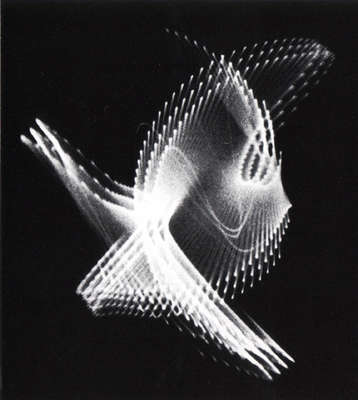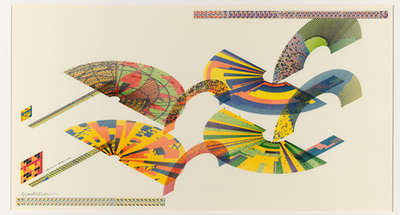29.01.2011 – 24.04.2011
URL: Drawing with Code
Drawing with Code brought together a selection of computer-generated art by some of the earliest and most important practitioners of generative digital art from the 1950s to today.
The selected works came from the Providence-based collection of Anne and Michael Spalter. Their collection is one of the largest and most important of its kind in the USA. It “shines a new light onto a darkened corner of the art historical record”, as the collectors wrote in their announcement.
In our current digital environment when just about everyone holds the processing power of a full computer in their pocket, it is difficult to remember a time when computer technology was not involved in every aspect of our lives. In the arts—visual, cinematic, musical, dance, and theater—the computer has become not only an accepted, but, in many cases, an intrinsic means for artistic expression. The artists featured in Drawing with Code emerged in the early computer-era when the technology was rudimentary by current standards and its capabilities rarely extended beyond the world of pure computation. Merging their interests in art and coding, some of these practitioners came to call themselves Algorists, artists who employed original algorithms to create images. In addition to works on paper, Drawing with Code presents the work of two filmmakers, Lillian Schwartz and Stan VanDerBeek, who were brought into Bell Labs Research by Kenneth Knowlton to make some of the first computer art animations. These six animations were collaborations using Knowlton’s BEFLIX (Bell Flicks) programming language for bitmap computer-produced movies.
The artists in Drawing with Code represent some of the earliest innovations in computer-generated art from the USA, Europe, and Asia, pioneering a new form of collaboration between science, technology, and art that pushed the boundaries of both. cf [deCordova, 2011]
“Many of these original people were either programmers or mathematicians enamored with what they could do visually with computers,” says George Fifield, the curator of the show (…). Further, he says that the artists “were dealing with possibilities of generative grammars, with the relationship between rule-based systems and randomness. You always had the ability to put a random number generator in a piece of code, but then you had a rule-based structure, so what would the output be?” [Phillips, 2011]
During the exhibition, several events were organized:
Panel Discussion at MIT
Moderated by John Maeda, President of the Rhode Island School of Design.
Tuesday, March 8, 2011, 7 pm (Bartos Auditorium, MIT Campus)
DeCordova and MIT presented an evening event focused on how the computer has influenced both the visual and literary arts. Participants included curator George Fifield, exhibiting artist Mark Wilson], and writers who employ computers in their creative practice. They discussed the history behind the intersection between science and art. In collaboration with MIT’s Purple Blurb series.
Artist Talks
Manfred Mohr: Saturday, February 5, 2011
Mark Wilson: Saturday, March 12, 2011
Curator Tour and Discussion
Guest Curator, George Fifield and Senior Curator, Word and Image Department, Victoria and Albert Museum, Douglas Dodds
Saturday, April 23, 2011
Eye Wonder Family Program
Sunday, March 6, 2011






